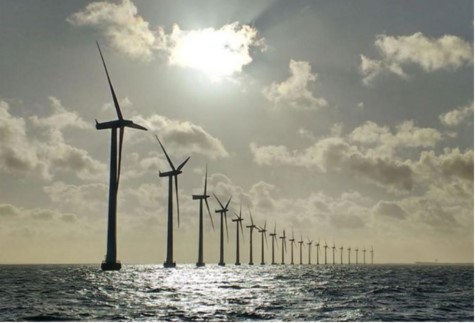- Definition and Types of Energy
- Myths And Misconceptions About Energy
- The Relationship Between Energy and Environment
- Climate Change and Carbon Footprint
- Greenhouse Gas Effect
- The Role of Human-Induced Greenhouse Gases and Energy Consumption
- Energy Efficiency and Sustainability
- Renewable Energy Sources and Future Perspectives
- Play and Learn
- Solar Energy Conversions
- Solar Energy Worldwide
- Solar Energy in Partner Countries
- Positive and Negative Impacts
- Technologies for Harnessing Solar Energy
- Solar thermal energy technologies and applications
- Electricity Generation Methods
- Passive Heating and Cooling of Residences with the Sun
- Concentrator solar power (CSP) systems and electricity generation
- Systems and Applications That Generate Electricity directly from solar rays
- Photovoltaic Cells and Panels
- Domestic PV Systems
- Off-Grid PV Systems
- Hybrid Connected Systems
- Materials Used in PV Cells
- Play and Learn
Offshore Wind Turbines
Efficient use of offshore wind energy is of great importance for the wind energy market. Although wind turbines mounted on the seabed are generally preferred in areas close to the coast, these systems can cause problems such as noise, visual pollution and affecting ship traffic. For this reason, studies on floating platform wind turbines are increasing.
Offshore winds have less turbulence than onshore winds. This allows for higher wind speeds, allowing for more electricity to be produced. Given that the power generated increases as the cube of the wind speed, the generation capacity increases significantly even when only a few kilometers away from land. For example, in an area where the average wind speed is 28 km/h,
it is possible to generate 60% more electricity than in an area where the speed is 22 km/h. This shows the critical importance of the speed factor in generating electricity from wind power.

Today, offshore wind turbines are adapted from land-based turbines and made resistant to sea conditions. In this process, the robustness of the turbines is increased by designing tower structures resistant to wave loads. In addition, the gear system and electrical components are strengthened with special protection methods against the corrosive effects of sea water. Special access systems are added to ensure easy access to the platform for maintenance personnel, while security measures are increased with emergency switches. The outer surfaces of the turbines are coated with special paints resistant to sea water to make them long-lasting, and warning lights and eye-catching colors are used for aircraft. In addition, additional security measures are taken to ensure that marine vehicles can notice the turbines in foggy weather.